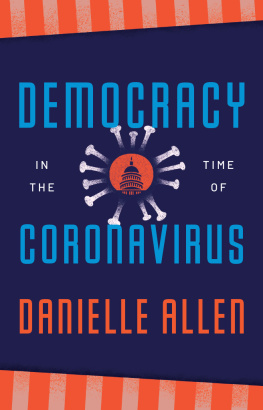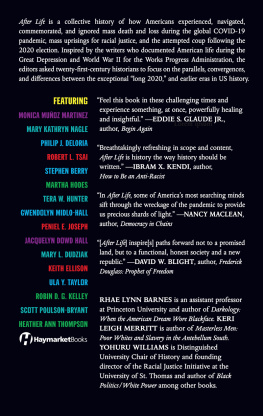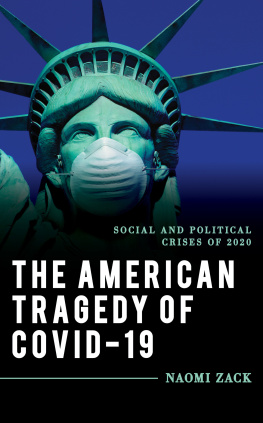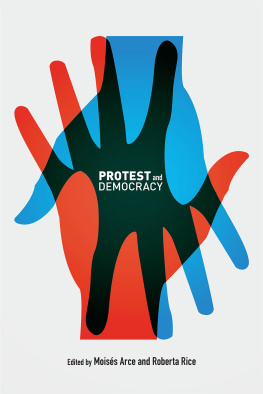Democracy amid Crises

Oxford University Press is a department of the University of Oxford. It furthers the Universitys objective of excellence in research, scholarship, and education by publishing worldwide. Oxford is a registered trade mark of Oxford University Press in the UK and certain other countries.
Published in the United States of America by Oxford University Press
198 Madison Avenue, New York, NY 10016, United States of America.
Oxford University Press 2023
All rights reserved. No part of this publication may be reproduced, stored in a retrieval system, or transmitted, in any form or by any means, without the prior permission in writing of Oxford University Press, or as expressly permitted by law, by license, or under terms agreed with the appropriate reproduction rights organization. Inquiries concerning reproduction outside the scope of the above should be sent to the Rights Department, Oxford University Press, at the address above.
You must not circulate this work in any other form and you must impose this same condition on any acquirer.
Library of Congress Cataloging-in-Publication Data
Names: Annenberg IOD Collaborative, author
Title: Democracy amid crises : polarization, pandemic, protests, and
persuasion / the Annenberg IOD Collaborative.
Description: New York, NY : Oxford University Press, [2023] |
The Annenberg IOD Collaborative members are: Matthew Levendusky, Josh Pasek,
R. Lance Holbert, Bruce Hardy, Kate Kenski, Yotam Ophir, Andrew Renninger,
Dan Romer, Dror Walter, Ken Winneg, and Kathleen Hall Jamieson. |
Includes bibliographical references and index.
Identifiers: LCCN 2022042308 (print) | LCCN 2022042309 (ebook) |
ISBN 9780197644690 (hardback) | ISBN 9780197644706 (paperback) |
ISBN 9780197644720 (epub) | ISBN 9780197644737
Subjects: LCSH: PresidentsUnited StatesElection2020. |
United StatesPolitics and government2017-2021. |
ElectionsUnited StatesPublic opinion. | AmericansAttitudes
Classification: LCC E915 .A56 2023 (print) | LCC E915 (ebook) |
DDC 324.973/0933dc23/eng/20221025
LC record available at https://lccn.loc.gov/2022042308
LC ebook record available at https://lccn.loc.gov/2022042309
DOI: 10.1093/oso/9780197644690.001.0001
Contents
The Annenberg IOD Collaborative
Matthew Levendusky, Kathleen Hall Jamieson, R. Lance Holbert, and Josh Pasek
Josh Pasek and Matthew Levendusky
R. Lance Holbert, Yotam Ophir, Dror Walter, Josh Pasek, and Kathleen Hall Jamieson
Kathleen Hall Jamieson, Matthew Levendusky, Josh Pasek, and Andrew Renninger
Matthew Levendusky, Josh Pasek, Andrew Renninger, and Kathleen Hall Jamieson
Kathleen Hall Jamieson, Matthew Levendusky, Josh Pasek, and Andrew Renninger
Matthew Levendusky, Josh Pasek, Andrew Renninger, and Kathleen Hall Jamieson
Josh Pasek and Kathleen Hall Jamieson
Josh Pasek and Kathleen Hall Jamieson
Josh Pasek, Matthew Levendusky, and Kathleen Hall Jamieson
Kathleen Hall Jamieson, Matthew Levendusky, and Josh Pasek
Matthew Levendusky, Josh Pasek, and Kathleen Hall Jamieson
The Annenberg IOD Collaborative
Josh Pasek, Ken Winneg, and Matthew Levendusky
On January 6, 2021, we were on a Zoom call vetting questions for the last wave of the panel data underlying Democracy amid Crises. We expected that day to complete the questionnaire for the studys final wave and to do so (symbolically) on a day certifying the results of the 2020 election we had set out to study two years before. Partway through the call, however, we began to receive news alerts on our phones that a mob of Trump supporters had stormed the US Capitol. The expressions we saw on each others faces suggested that even the most jaded among us had not anticipated that a riot would follow the speech the incumbent president gave at the Ellipse that day. Or that any of us would ever witness a mob marching though the Capitol chanting Hang Mike Pence, or see a Confederate battle flag paraded through its corridors. Collaboratives collaboratebut not dumbstruck, horrified ones. So we suspended the Zoom session to immerse ourselves in the media that we both study and consume. Given the centrality of January 6 to the story we tell in the pages that follow, there is a dark irony to our having met on that day.
The Annenberg Institutions of Democracy (IOD) Collaborative draws on the expertise of scholars from five disciplines to help us make sense of the 2020 election and its aftermath. Its members included a political scientist (Matt Levendusky), four communication scholars (Lance Holbert, Bruce Hardy, Kate Kenski, and Josh Pasek), a rhetorical critic turned sometime social scientist (Kathleen Hall Jamieson), a psychologist (Dan Romer), a survey researcher (Ken Winneg), and a geographic data expert (Andrew Renninger). Off-screen but working away on social media data and so also enmeshed in the moment were two other members of the team, both communication scholars (Yotam Ophir and Dror Walter). Since the IOD Collaborative is a project of the Annenberg Public Policy Center (APPC) of the University of Pennsylvania, it will come as no surprise that five members of the team are graduates of the universitys Annenberg School for Communication or that two of us are on the faculty there.
This book, and the survey on which it is based, was truly a collaborative effort. Every team member contributed questions. Ken managed the survey. Andrew prepared and integrated the geographic data that we use throughout the book. Josh focused on data analysis and racial attitude measures, and produced the striking visuals that readers will encounter in all of our empirical chapters. Lance developed media measures. Matt was in charge of fundamentals and legitimacy. Kathleen tracked the messaging. Bruce focused on campaign events, Kate on early voting. Dan concentrated on conspiracy theories. Yotam and Dror sleuthed through social media messaging. A bit more biographical detail on the individuals in the Zoom squares on the screen that day can be found in the contributor list that follows the preface.
Dictionaries define a collaborative, a word that until recently was thought to serve only as an adjective, as an organized group effort. Although sometimes more effortful than organized, ours was both. For us, the word collaborative is also a solution to a problem. Crediting Democracy amid Crises to the Annenberg IOD Collaborative not only recognizes the Annenberg Public Policy Center endowment from which its funding came but also is a way of avoiding crowding the cover of a book with ten names. It also resolves the question and vaudeville gag line, Whos on first? Although individual chapters credit those who put fingers to computer keyboards, the book as a whole would not exist were it not for the work of every individual who was part of the collaborative. Accordingly, we consider the group as a whole the author of the book. This is particularly important since, as we pruned the manuscript to ensure that its length did not rival War and Peace, entire blocks of pristine prose by many of its members were sidetracked into other forms of publication.
Still, someone needs to be on first. So we have listed Matt, Josh, and Lance as the first three authors in the collaborative list to recognize that Matt did a disproportionate amount of the writing; Josh the cleaning, organizing, and analysis of the data, and virtually all of the work reflected in the figures; and Lance the heavy lifting of theorizing, instrumenting, analyzing, and writing up the media findings. Kathleen is listed at the end because she initiated the project and, as the firstborn in her family, thought that she should be last for a change. The order in which authors are listed atop each individual chapter credits as first author the person who assumed primary responsibility for conceptualizing its arguments and organizing its evidence.










